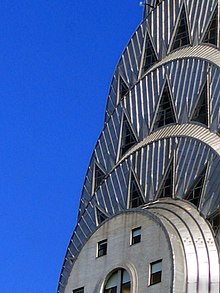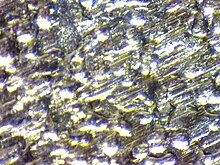
Back Blik Afrikaans Tola AN صفيحة معدنية Arabic Blieka BAT-SMG Ламарина Bulgarian Xapa Catalan Plech Czech Blik Danish Blech German Λαμαρίνα Greek


Sheet metal is metal formed into thin, flat pieces, usually by an industrial process.
Thicknesses can vary significantly; extremely thin sheets are considered foil or leaf, and pieces thicker than 6 mm (0.25 in) are considered plate, such as plate steel, a class of structural steel.
Sheet metal is available in flat pieces or coiled strips. The coils are formed by running a continuous sheet of metal through a roll slitter.
In most of the world, sheet metal thickness is consistently specified in millimeters. In the U.S., the thickness of sheet metal is commonly specified by a traditional, non-linear measure known as its gauge. The larger the gauge number, the thinner the metal. Commonly used steel sheet metal ranges from 30 gauge to about 7 gauge. Gauge differs between ferrous (iron-based) metals and nonferrous metals such as aluminum or copper. Copper thickness, for example, is measured in ounces, representing the weight of copper contained in an area of one square foot. Parts manufactured from sheet metal must maintain a uniform thickness for ideal results.[1]
There are many different metals that can be made into sheet metal, such as aluminium, brass, copper, steel, tin, nickel and titanium. For decorative uses, some important sheet metals include silver, gold, and platinum (platinum sheet metal is also utilized as a catalyst). These metal sheets are processed through different processing technologies, mainly including cold rolling and hot rolling. Sometimes hot-dip galvanizing process is adopted as needed to prevent it from rusting due to constant exposure to the outdoors. Sometimes a layer of color coating is applied to the surface of the cold-rolled sheet to obtain a decorative and protective metal sheet, generally called a color-coated metal sheet.
Sheet metal is used in automobile and truck (lorry) bodies, major appliances, airplane fuselages and wings, tinplate for tin cans, roofing for buildings (architecture), and many other applications. Sheet metal of iron and other materials with high magnetic permeability, also known as laminated steel cores, has applications in transformers and electric machines. Historically, an important use of sheet metal was in plate armor worn by cavalry, and sheet metal continues to have many decorative uses, including in horse tack. Sheet metal workers are also known as "tin bashers" (or "tin knockers"), a name derived from the hammering of panel seams when installing tin roofs.[2]
- ^ "Design Guide: Sheet Metal Fabrication" (PDF). xometry.com.
- ^ Green, Archie (1993). Wobblies, pile butts, and other heroes : laborlore explorations. Urbana u.a.: Univ. of Illinois Press. p. 20. ISBN 9780252019630. Archived from the original on 14 July 2015. Retrieved 14 July 2015.